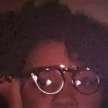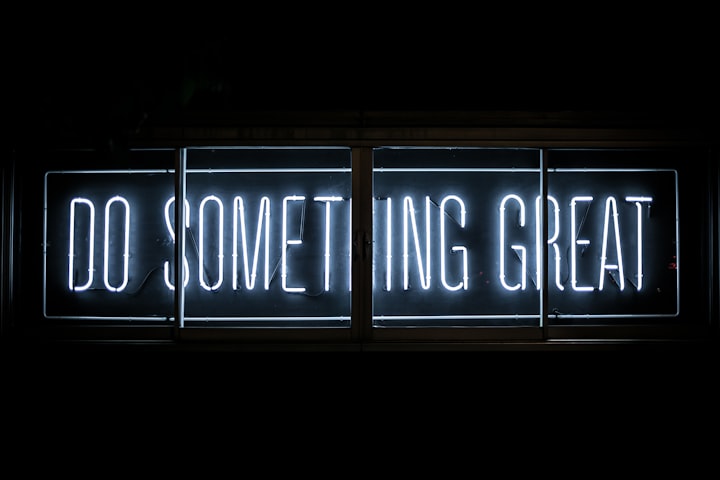Have You Read This Yet? 'Milk and Honey' by Rupi Kaur - Part 1
The fluid emotion and beauty of Rupi Kaur leaves readers breathless. Whether you've already read it or haven't yet decided, this article might be for you.

(WARNING: This book does touch on subjects such as rape, abuse, and other sensitive subjects. Read this, and the book, with caution and care to your mental well being)
I picked this book up on a lark. It was at Urban Outfitters with a lot of trendy books about how to be Instragam famous or how to rock an awesome life ̶ it was out of place. I left it behind and didn't think about it again until I saw it at Barnes and Nobles. I read 'Milk and Honey' in three days, voraciously, and was breathless with the depth of emotion by the end. The book of poetry is separated into four parts called: the hurting, the loving, the breaking, and the healing. Each section is chock full of feeling, a fluidity of emotion that leaves you deeply touched in its familiarity to your heart and yet envious of its ability to communicate so easily what might take you an age to try and define. However don't think for a second the author didn't go through a battle to get to the point where she could relay this to you, that she didn't have her own moments of suddenly absent vocabulary and a throat muffled with cotton. This book is so wonderful to me, that I want to dedicate an article to each section in honor of the struggle and pain experienced to create this labor of the heart. We begin with the hurting.

The exposition is important. It is the tool used in television, movies, and literature to lure in the reader. It sets the tone of the whole book, if you will. You start first with a black page, on which "the healing" is written in simple white letters at the top. Flipping the page, there are only six lines.
how is it so easy for you to be so kind to people he asked
milk and honey drippedfrom my lips as i answered
cause people have notbeen kind to me (Kaur, 2015, p.11)
Already you know there's a journey to be undertaken in each page of this book. Such a simple statement is actually so powerful and profound when you think about it. To have learned kindness by dint of exposure to cruelty, learning what to do by experiencing what someone never wanted for themself. There are only a few pages where the author writes anything resembling a paragraph, and most pages are just a few short and sharp lines that stick to you tenaciously the entire book through.
The hurting is an ode to who has hurt Kaur, and who she sees hurting all throughout her life thus far. The subject whose hurts are realized shifts continuously, with no indication or, seemingly, no pattern to follow for your to understand the shift. The style of narration is a personal, informal sort that's more like friends whispering between each other or maybe even more like the readers musing quietly to themselves. The pain comes from a myriad of places and people in a variety of ways, but we can narrow it down to three basic categories: physical, emotional, and mental.
The Physical
Kaur (2015) reveals right from the start that she is no stranger to pain with the admission written as prose on page fifteen detailing a visit with a therapist, the conversation alluding to her being molested by a family member, her uncle, as a child. A stanza on page 46 indicates that perhaps another violation might have come from a cousin, but we are told directly that an uncle of hers did cause her great pain and betrayal. Further in she details a moment with another, what their relationship might be is not mentioned but we might assume it is a lover. "You plough into me with two fingers and i am mostly shocked. it feels like rubber against an open wound. i do not like it"(Kaur, 2015, p.38). Her description is distant, almost clinical, as she notes that though she clearly is acting and not at all enjoying it her partner has not the faintest clue. It never gets any better, she never feels any pleasure, only disappointment or maybe resignation as another man in her life uses her body.
An interesting metaphor used in this section actually brought me, as the reader, almost physical discomfort when she makes another reference to painful sexual encounters: "He guts her with his fingers like he's scraping the inside of a cantaloupe clean." The reader can see such an action in there mind's eye and is both discomfited and almost repulsed as the implications beyond the immediate observation is made. Such a brilliant metaphor and use of the reader's imagination against them merely draws one in deeper into the story, helping the reader to make the journey as if they had lived it.
The Emotional
Referring to page fifteen once more, it should be obvious that such a traumatic and horrific event would leave emotional scars. This line in the third stanza, " . . . the one he fingered out of you like a confession," was of particular interest to me because of the use of the word confession. Confession is to admit the truth, and typically the feeling associated with the word is relief of having gotten something off one's chest. However, relief is definitely not the right emotion to place in this context so it leaves the reader to ponder over that word and the different implications before they can move on to the next line.
The emotional pain Kaur goes through is, yes, mingled with mental but there are distinctions that let you know the tri-pronged attack is just all the more deadly. There is a poem on page thirty-three where Kaur explains that the hurting began from the moment of her birth, " . . . learning to shrink for a family who likes their daughters invisible . . ." clues the reader in on a perhaps traditional patriarchal household. The poem continues with, ". . . believe them when they say you are nothing . . ." might also indicate that her family members saw no reason for a young woman to grow independently and to remain modest and quiet, a ghost until someone (would it be impertinent of me to assume a man?) deems you worthy of substance for their needs.
She refers again to being used by men on page thirty-six, muses that woman who are wronged by so many who should be dear to them that they can never truly feel safe or comfortable at all, and truly it is a sad way to live. ". . . even in a bed full of safety we are afraid" (Kaur, 2015, p.36).
The Mental
The hurting is all a vicious cycle that feeds into each other until it is hard to remember where it all began, what exactly started it. The trauma of her violation created a fear that she couldn't feel safe even around who should protect her. The pressure of living within a family that would prefer their daughters be seen and not heard is stifling and disheartening for any person. She even touches upon the distant, hard-to-reach relationship with her father when she decisively states that on daughter should have to fight for a relationship with her father, and a few pages later, she writes a short and candid letter to her father letting him know that she understands his difficulties expressing himself and knows that he loves her just as much as she loves him.
Then in page thirty-two she expresses a sensation of being torn in two between her parents, one overflowing and the other bone dry in terms of affection. Such startling contrasts can certainly be confusing, and growing up to try and manage the two is doubtless no easy feat. She describes later on how every time at the dinner table her mother tried to speak her father would silence her with a scolding word and this taught her that it was expected women be silent, only compounding the lesson she is learning to be nothing.
The Culmination
The writing isn't all bleak or stark, and she gives her readers moments of rebellion among the hurt, letting the usually banked flame inside her blaze for short yet bright moments. These moments range from short and sharp stanzas to slightly lengthier releases of emotion, given like little gifts or rewards for her readers to encourage them that things must change, simply because it is the nature of things. Kaur tells her readers". . . it will not end you," and that you should not be placed in the hands of those who would overlook your beauty and value in favor of a far less meaningful conjuration they make up for themselves. Kaur (2015) will tell you that you are "half blade and half silk" (p. 30) and this powerful line should tell you simply enough that beauty and strength are intrinsic, in your very core.
And yet . . . in the end, the hurting ends with a cutting line, a sharp descent before you can reach the next section. The hurting is a mixture of pain, courage, and sorrow. It is up to the reader to decide which of those will be the primary descriptive term for the entirety of it at the end; it will define the next chapter and the one afterwards with an indelible shadow. Which is not to say, really, that there is a right or wrong choice in how you react to it, or what you take away from it ̶ because what else can one do, but go on?
About the Creator
Delise Fantome
I write about Halloween, music, movies, and more! Boba tea and cheesecake are my fuel. Let's talk about our favorite haunts and movies on Twitter @ThrillandFear






Comments
There are no comments for this story
Be the first to respond and start the conversation.